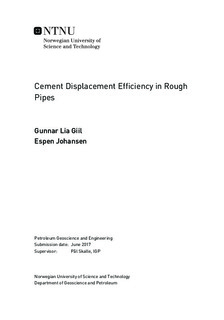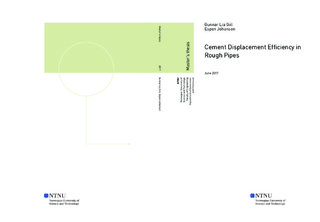| dc.description.abstract | Research within casing string cementing is important in the oil industry. The integrity of an oil well is dependent on the quality of the cement job, and a poor cement job can put the environment, company economics and human lives in severe danger. Mud channels in the cement is often a problem, and if the cement velocity profile experiences no-slip condition at the outer boundaries the mud will be displaced mainly in the center of the annular space, leading to mud channels along the casing string and the formation. If the no-slip condition is not valid, the displacement depends on the slip velocity, or the local velocity. In this report laminar flow were in focus, estimated on basis of the average flow velocity. Turbulent flow requires pressures that many deepwater and extended reach wells can not tolerate.
The study is aimed at quantifying a relationship between pipe roughness and local velocity. Experiments were performed in a flow loop where annular flow was simplified to pipe flow. Various water and oil based viscous fluids were used as displacing fluid and displaced fluid, representing cement and spacer respectively. Pipes with three different degrees of roughness were used. The roughness degree was quantified as number of spiral grooves in the pipe wall per length.
The procedure for making two different non-Newtonian water based fluids were presented. A cooperation with SINTEF was also presented, through a brief overview of their large-scale flow loop and presentation of selected results.
Results of this study concludes that cement displacement of spacer can not be modelled in the simple flow loop provided. Gravity segregation and entrance effects dominated the flow, and no clear relationship were found between the roughness degree and the local velocity. Two proposals for better flow loop designs were made and presented in this report. | |

